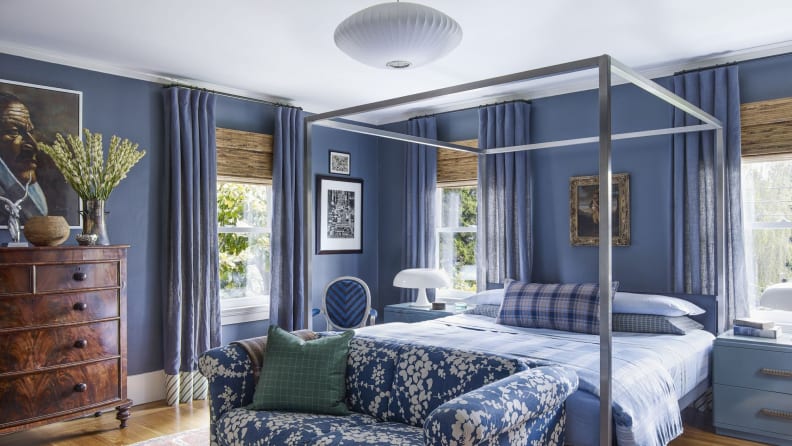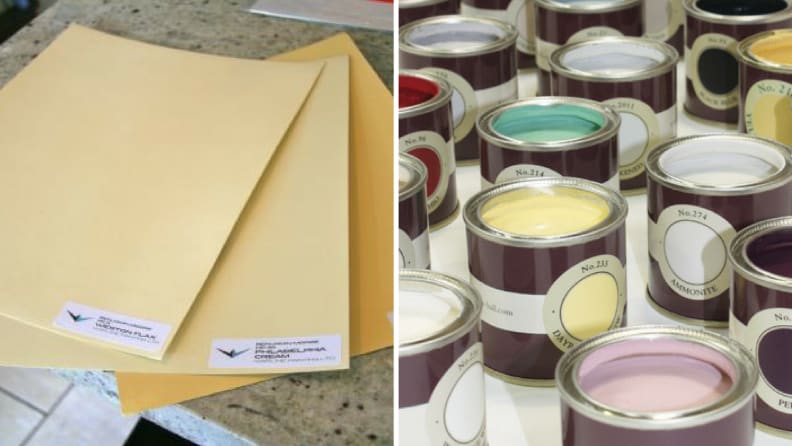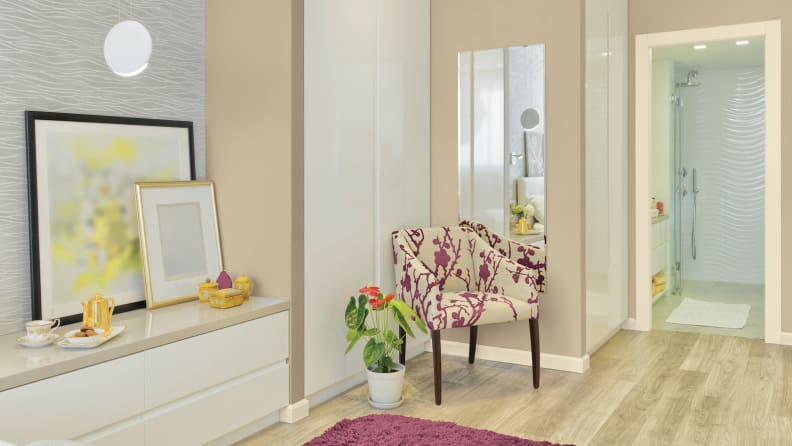Here are the best ways to test paint color to see if it works in a room
These ideas will help you make the right color choices
Products are chosen independently by our editors. Purchases made through our links may earn us a commission.
Whether you've just moved into a new home, or the seasons have changed, or your in-laws are coming for a visit, someday, you'll want to change the color of your walls. Don't hesitate—paint is one of the least expensive ways to make big changes in your living space. Still, it's not free or effortless, so you don't want to make a mistake.
Even in an empty house, you shouldn't choose a color without trying it out. You need to test to make sure a color you like complements the existing elements in a home, as well as your furniture, and the rest of your decor.
The light in a room can affect the way color looks, too. Just because you like the color of a room you saw on TV or on Pinterest doesn't mean it will look that way in your house. Again, you need to test.
Yes, I know, color can be complicated. I've been an architectural color consultant for 15 years, helping people select colors that make their homes look great, inside and out. To test the best colors for your place, here are the steps I recommend.
1. Begin in the spaces that might limit your color choices
This sounds like a crazy place to start, but to create a nice color flow throughout the home, you should coordinate your new colors with your home's more permanent features like kitchen countertops, backsplash tiles, and flooring.
2. Consider colors that support the room's function

Blue is a relaxing color to paint bedroom walls. It's easy to imagine falling asleep in a room this color.
Think about what you and your family will do in the room you want to paint, because that will influence your color choice. Restful blue walls can be perfect in a bedroom, while an energetic red might work better in a dining room. Since green is the color of growth and energy, think about it for a room where you want to have lively conversations. White or gray walls in a kitchen look clean and classic.
3. Check your favorite stuff for color cues
Anything you love can inspire a color palette. Your art, rugs, some throw pillows, even the pattern on your comforter cover can suggest combinations of colors you might want to see on your walls. Bring your inspiration piece into the room you want to paint, to see how it looks there.
4. Test color on a sample board

To test wall color, buy some small cans of paint in colors you are considering. Make some sample boards, tape them on the wall, and wait to see which color speaks to you.
Bring home some swatches from the paint store, but don't make a color decision yet. Nobody can pick wall color accurately from a two-inch chip, because colors look much different on the wall than they do on a tiny strip. To test, you need to go big, so make yourself some color boards.
Buy a poster board or foam core, along with a sample size container of each color you're considering. Paint a couple of coats onto your sample boards, and when they dry, tape them to your walls with painter's tape. Live with the colors for a few days, and see how well they work with your existing finishes and favorite items. Notice how the light changes them. You will eventually gravitate toward the colors that feel best.
5. Put some paint on one wall
Start by painting one wall. Use a high quality brush or roller, and apply the paint neatly. The most gorgeous color won't look good if you do a sloppy job. Don't worry if the first coat doesn't look the way you expected. Although some paints promise one coat coverage, for best results, put on two coats. If you like what you see, go ahead and paint the rest of the room.
6. Try this if you still can't decide

Say you tested fuchsia, and it didn't work. Don't give up. Try a neutral color like this one from Glidden on the wall.
It sometimes takes more than one test to find the right color. So, if you need to start again, here are some additional ideas to help you pick the right color.
Use a neutral. Greige, a color that combines cool gray and warm beige tones looks good anywhere. Try pale blue-gray walls to see how fresh, bright colors pop against them. Black is the newest trendy neutral, but you need lots of natural light to make it work.
Add more lighting. Surprisingly, even white walls need light to look nice. A white room without light looks dull and drab.
Consider jewel tones to bring out the best in small, dark spaces. For example, you can be fearless with color in a tiny powder room. How much time are you going to spend in there, anyway?
